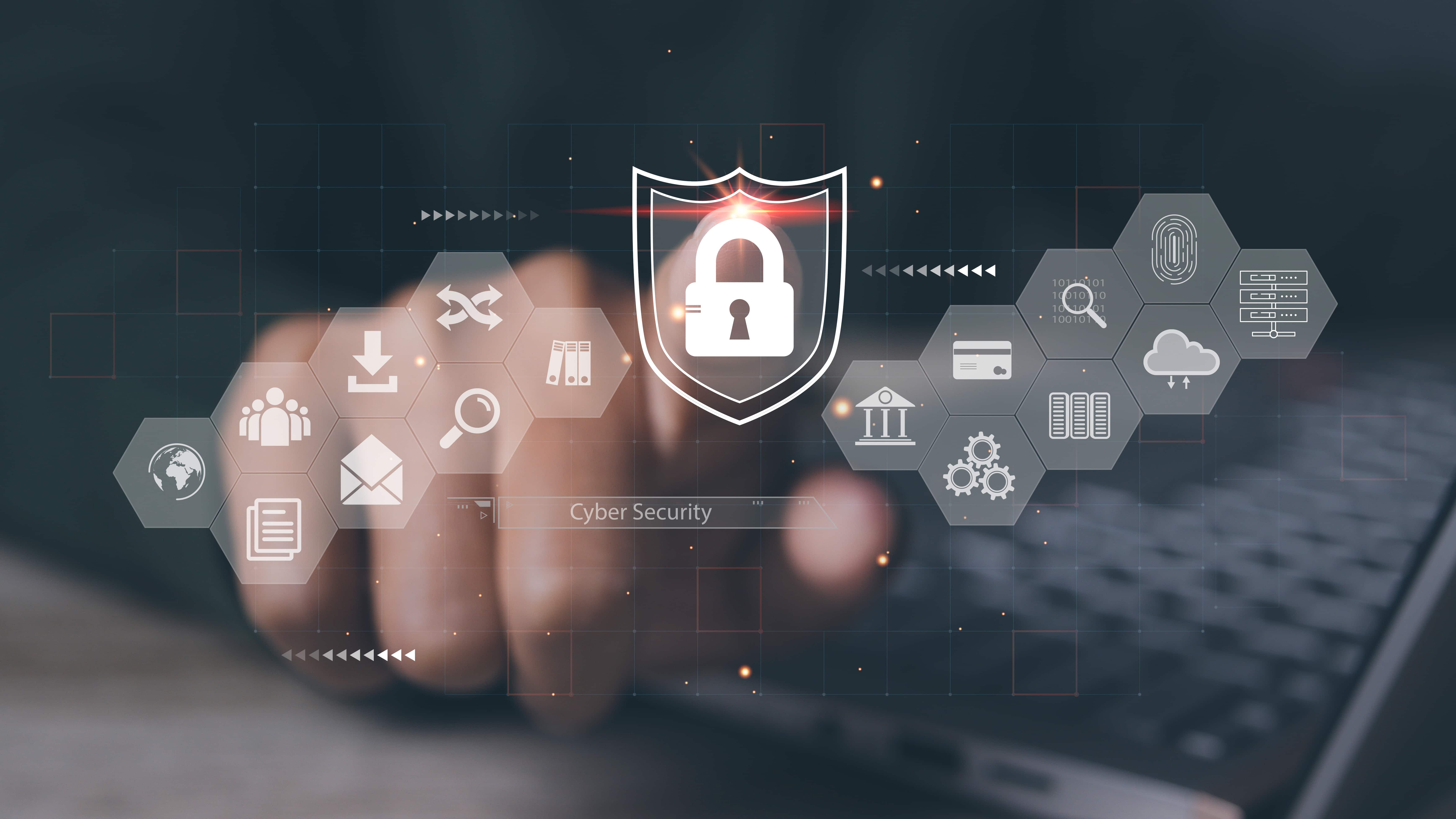In the fast-paced world of finance, downtime isn’t just an inconvenience—it’s a direct threat to profitability, trust, and compliance. Financial firms operate on razor-thin margins and even thinner tolerance for errors or interruptions. Whether you’re managing a hedge fund, private equity firm, or investment bank, your ability to maintain seamless operations around the clock is essential.
This is where IT support and business continuity planning come into play. These two pillars work hand-in-hand to ensure that your operations are not only running smoothly today but are also resilient against future disruptions—from cyberattacks to natural disasters.
In this article, we’ll explore how to build a robust continuity strategy with dependable IT support, the technologies and processes involved, and why this is more than just a technical issue—it’s a business-critical one.
Understanding the Critical Importance of Business Continuity in Financial Firms
Why Financial Services Can’t Afford Downtime
Financial firms thrive on precision, speed, and reliability. Transactions worth millions (or billions) of dollars are executed in microseconds. A minute of system failure can result in missed trades, lost opportunities, and a breakdown in client confidence.
But the stakes go beyond profit. In many jurisdictions, financial services are considered critical infrastructure, meaning they’re expected to maintain operations even during widespread emergencies. That includes not just trading platforms, but also client communications, payment processing, and regulatory reporting.
Downtime may lead to:
- Client churn due to loss of trust
- Regulatory penalties from failing to meet compliance deadlines
- Reputational damage that impacts fundraising and deal-making
- Data loss, which can permanently compromise assets and transactions
Regulatory and Compliance Pressures on Business Continuity
Financial firms are under constant scrutiny from regulators such as the SEC, FINRA, and state-level agencies. These bodies require firms to demonstrate that they can maintain operations and protect client data—even in worst-case scenarios.
Key regulations and guidelines that require business continuity planning include:
- FINRA Rule 4370: Mandates every member firm to create and maintain a written Business Continuity Plan (BCP)
- SEC Regulation S-P: Requires the safeguarding of customer records and information
- Gramm-Leach-Bliley Act (GLBA): Enforces protections for sensitive personal financial data
Failure to comply can result in fines, suspensions, or even shutdowns. Business continuity is not optional—it’s mandatory, and it must be backed by robust IT support systems.
Core Elements of an Effective IT Support Strategy

24/7 Monitoring and Incident Response
True business continuity begins with proactive, around-the-clock IT support. Financial firms cannot afford to be reactive; they need real-time monitoring systems that detect anomalies and resolve issues before they become full-blown outages.
Effective 24/7 support includes:
- Network and server monitoring: Continuous health checks of infrastructure
- Automated alerts and escalation protocols: Instant notifications to tech teams
- Dedicated support engineers: Ready to intervene at any time
- Remote troubleshooting capabilities: Especially critical for hybrid or remote teams
The goal here is simple: resolve problems before they impact the end user. In industries like finance, even brief disruptions can have outsized consequences, so a fast response time is critical.
Proactive Maintenance and System Health Checks
Beyond monitoring, IT support should include proactive maintenance—scheduled activities that keep your systems optimized, secure, and stable. This differs from break/fix models, which are reactive and risky in high-stakes environments.
Proactive IT support activities include:
- Software patching and updates: Fixing known vulnerabilities
- System performance tuning: Ensuring applications run smoothly
- Hardware diagnostics: Preventing failure through early detection
- Security audits: Identifying and closing gaps before attackers do
When these routines are consistently implemented, they drastically reduce the likelihood of unplanned outages. And when paired with 24/7 monitoring, they form the backbone of any effective IT continuity plan.
Designing a Business Continuity Plan (BCP) for Financial Firms
Creating a strong Business Continuity Plan (BCP) is not just about IT—it’s about understanding your firm’s vulnerabilities and building a system that protects people, processes, and profits. For financial firms, a BCP is a living document that must evolve with the pace of technology, regulation, and business risk.
Risk Assessment and Business Impact Analysis
The foundation of any BCP is a risk assessment—a structured evaluation of threats that could impact business operations. In finance, these threats include:
- Cyberattacks and ransomware
- Power outages or infrastructure failure
- Natural disasters (floods, storms, earthquakes)
- Human error or insider threats
- Vendor or third-party service failure
After identifying risks, firms must conduct a Business Impact Analysis (BIA). This analysis helps prioritize which systems, departments, and functions are most critical to operations.
For example:
| Function | Impact if Unavailable | Priority Level |
| Trading Platform | High (Revenue loss) | Critical |
| Payroll Processing | Medium | Moderate |
| Marketing Website | Low | Low |
This allows decision-makers to focus resources on the areas that matter most—such as trading desks, compliance systems, and customer portals.
Recovery Time Objectives (RTO) and Recovery Point Objectives (RPO)
Once you know what’s critical, it’s time to set realistic recovery targets:
- Recovery Time Objective (RTO): How quickly a system or process must be restored after a disruption.
- Recovery Point Objective (RPO): The maximum amount of data loss measured in time (e.g., 15 minutes of lost data).
For financial firms, RTOs and RPOs are often measured in minutes, not hours. Trading platforms, portfolio management systems, and client data stores must be restored as quickly and accurately as possible.
These objectives drive key decisions, such as:
- The type of backup system you need (on-prem vs. cloud)
- Whether you need real-time replication
- The scope and complexity of your disaster recovery architecture
A well-designed BCP, supported by capable IT teams, ensures that your firm won’t scramble when things go wrong—you’ll respond with confidence and control.
The Role of Cybersecurity in Business Continuity

In today’s digital landscape, cybersecurity and business continuity are inseparable. Financial institutions are among the most targeted sectors for cyberattacks due to the high value of their data and transactions.
Cyber Threats Targeting Financial Institutions
Modern cyber threats are sophisticated, well-funded, and increasingly automated. Financial firms are vulnerable to:
- Phishing attacks that exploit employees
- Ransomware that encrypts critical systems
- Advanced persistent threats (APTs) launched by nation-state actors
- Insider threats from disgruntled or careless employees
These threats can lead to data breaches, downtime, compliance violations, and massive financial loss. In fact, some of the most devastating continuity failures in finance have stemmed from inadequate cyber defenses.
Best Practices for Cyber Resilience
Building cyber resilience means implementing controls that not only prevent attacks, but also minimize damage when breaches occur. Key practices include:
- Multi-factor authentication (MFA) for all critical systems
- Regular penetration testing and vulnerability scans
- Zero Trust architecture—where no device or user is trusted by default
- Employee training to recognize social engineering tactics
- Incident response plans that are tested regularly
Pairing cybersecurity with business continuity planning ensures that your firm is not only less likely to be breached, but also prepared to recover quickly if a breach does happen.
Leveraging Managed IT Services to Enhance 24/7 Operations
For many financial firms—especially those without internal IT teams—partnering with a Managed Service Provider (MSP) is the most effective way to maintain business continuity around the clock.
Benefits of Partnering with a Managed Services Provider (MSP)
MSPs provide outsourced IT support with the infrastructure, personnel, and expertise to handle complex environments. The benefits include:
- 24/7 Monitoring and Support: Always-on oversight of your systems
- Predictable Costs: Subscription-based pricing simplifies budgeting
- Access to Expertise: Experienced engineers, compliance specialists, and cybersecurity professionals
- Scalability: IT support that grows as your business expands
- Faster Recovery Times: Dedicated disaster recovery planning and response protocols
An MSP acts as a strategic partner, not just a service vendor. They work with you to understand your business goals and regulatory responsibilities, ensuring your continuity plan is both effective and compliant.
Case Study: How MSPs Keep Financial Firms Always-On
Consider a mid-sized hedge fund that operates globally. After experiencing a ransomware scare, the firm partnered with an MSP to upgrade its continuity plan. The MSP implemented:
- A hybrid cloud infrastructure with failover capabilities
- A 24/7 security operations center (SOC) to monitor threats
- Regular disaster recovery drills to ensure staff readiness
Since then, the hedge fund has experienced zero downtime, even during regional power outages and targeted cyberattacks. Their clients remained unaware of any issues—a testament to proactive planning.
Cloud Solutions and Disaster Recovery Planning
As financial firms embrace digital transformation, cloud technology has become a cornerstone of modern business continuity strategies. Its ability to provide on-demand scalability, geographic redundancy, and real-time data replication makes it an ideal solution for firms that require uninterrupted access to data and services.
Cloud Backup Strategies for Financial Data
In the finance sector, data is everything. From trade logs to customer information, losing even a small piece of it could have serious legal, financial, and reputational consequences.
Cloud backup strategies offer several advantages:
- Automated backups that reduce human error
- Geographically distributed data centers for regional redundancy
- Versioning and file recovery, allowing you to restore previous versions after corruption or deletion
- End-to-end encryption to protect sensitive information at rest and in transit
For most firms, a hybrid approach—combining on-premises storage with cloud-based backups—provides the best mix of speed, control, and resilience. Cloud backups can serve as a lifeline in case of catastrophic hardware failure or office inaccessibility.
Setting Up Redundant Systems for Immediate Failover
To meet aggressive Recovery Time Objectives (RTOs), financial firms must invest in redundant systems that can take over immediately when a failure occurs. This isn’t just about backing up data—it’s about mirroring critical infrastructure.
Examples of redundancy in action:
- Failover servers: Automatically kick in when primary systems go offline
- Load balancers: Distribute traffic evenly and reroute it during outages
- Redundant internet connections: Ensure uptime if one ISP goes down
- Virtual desktop infrastructure (VDI): Enables staff to work from anywhere, securely
These systems allow businesses to maintain operations even during disasters, minimizing disruption and ensuring clients receive continuous service.
Real-World Examples of Financial Firms Maintaining 24/7 Continuity
Seeing theory put into practice helps illustrate how effective IT support and continuity planning pay off. Below are a couple of real-world examples of financial firms navigating disruptions successfully.
Common Pitfalls to Avoid
Not all continuity plans are created equal. Here are mistakes firms often make:
- Overreliance on a single vendor (lack of diversification)
- Infrequent testing of backup and recovery systems
- Ignoring human factors—like staff communication and training
- Neglecting third-party risk, especially when outsourcing IT services
Avoiding these pitfalls can mean the difference between fast recovery and prolonged business paralysis.
Future Trends: How Technology is Evolving Business Continuity Planning
The pace of innovation is accelerating, and with it comes new tools that are transforming how financial firms approach IT support and continuity.
AI, Automation, and Predictive Analytics in IT Support
Artificial intelligence and automation are reshaping IT support. Tools that once took hours now take seconds, and systems can often detect and fix problems before human operators are even aware of them.
Emerging technologies include:
- AI-driven monitoring systems that predict hardware failure
- Automated incident response workflows
- Machine learning models that detect anomalies and threats
- ChatOps platforms that streamline IT team collaboration
These technologies not only improve efficiency, but also help firms stay ahead of risks rather than simply reacting to them.
Preparing for Emerging Risks in Financial Services
As digital infrastructure evolves, so do the threats. Financial firms must remain alert to emerging risks, such as:
- Quantum computing, which could break current encryption
- Supply chain attacks, targeting third-party software providers
- IoT-related vulnerabilities as more devices connect to networks
Continuity planning must therefore remain adaptive and forward-looking. This includes revisiting policies, retraining staff, and updating technology stacks regularly.
By embracing innovation and staying flexible, firms can ensure they’re ready for whatever challenges the future brings.
Frequently Asked Questions (FAQs)
How often should a financial firm test its business continuity plan?
At a minimum, plans should be tested annually. However, firms with high transaction volumes or regulatory exposure should test quarterly or biannually—especially after major system updates or staff changes.
What’s the difference between disaster recovery and business continuity?
Disaster recovery focuses on restoring IT systems and data, while business continuity covers the entire organization’s ability to function, including operations, communications, and client services.
Can small financial firms afford 24/7 IT support?
Yes. Managed Service Providers (MSPs) offer scalable packages that provide enterprise-level support at affordable rates, tailored to the size and needs of your firm.
How does compliance tie into business continuity planning
Many regulations (like FINRA Rule 4370) mandate documented and testable continuity plans. Failure to comply can result in legal penalties and reputational harm.
What’s one quick step to improve continuity today?
Conduct a risk assessment and verify that your critical data is backed up both off-site and in the cloud, with regular testing to ensure recoverability.
Final Thoughts
In the financial industry, staying operational 24/7 isn’t a luxury—it’s a requirement. With ever-evolving threats and tightening regulations, business continuity and IT support are no longer just technical necessities—they are strategic imperatives.
By investing in robust infrastructure, proactive monitoring, cyber resilience, and comprehensive continuity planning, financial firms can remain secure, compliant, and client-focused, even in the face of disruption.
This is where Computronix Managed IT Support makes a difference.
Computronix provides specialized IT services for financial institutions, with solutions designed to ensure always-on operations. Whether you’re a hedge fund, investment firm, or regional bank, Computronix offers:
- 24/7 system monitoring and rapid-response support
- Advanced cybersecurity solutions to protect sensitive financial data
- Cloud backup and disaster recovery services tailored to regulatory needs
- Regular business continuity planning and testing
- Dedicated IT consultants who understand the financial landscape
By partnering with Computronix, financial firms gain a trusted ally who understands their unique pressures and priorities—helping them stay one step ahead of outages, breaches, and compliance risks.
In today’s high-stakes environment, business continuity is about resilience, responsiveness, and readiness—and with Computronix, you don’t have to manage it alone.










